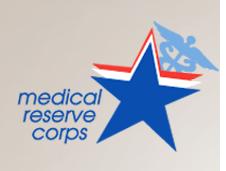The National Institute of Standards and Technology (NIST) will host the first of six workshops devoted to developing a comprehensive, community-based disaster resilience framework, a national initiative carried out under the President’s Climate Action Plan. The workshop will be held on Monday, 7 April 2014 in Gaithersburg, MD.
The Framework will establish the overall performance goals, identify existing standards, codes, and practices to enhance resilience, and identify gaps that must be addressed to enhance community resilience. The first version of the Disaster Resilience Framework will provide the basis for convening a Disaster Resilience Standards Panel (DRSP) representing the broad spectrum of the stakeholder community to further develop and refine the Framework.
The Disaster Resilience Framework will aim to:
- Develop consistent performance goals and metrics for buildings and infrastructure and lifeline systems to enhance community resilience,
- Identify existing standards, codes, guidelines, and tools that can be implemented to enhance resilience, and
- Identify gaps in current standards, codes, and tools, that if successfully addressed can lead to enhanced resilience.

Photo Credit: Carol Colman
The framework will consider key dimensions of resilience such as: (1) societal aspects that make a community resilient; (2) performance targets for buildings and infrastructure lifelines based on return to functionality; (3) emergency warning systems, response capability, and evacuation and sheltering plans; and (4) the interaction of technical, social, and economic factors that determine pre-disaster mitigation and post-disaster response and recovery. The Disaster Resilience Framework will also provide a starting point for key stakeholders to accelerate the paradigm shift necessary to advance from current practice to resilience-based approaches adaptable communities of varying size and complexity.
The Model Resilience Guideline will provide best practices for topics such as:
- Identification of performance goals for critical buildings and infrastructure systems essential to community resilience
- Evaluation of the resilience of critical buildings and infrastructure lifelines
- Design and construction methods to achieve resilience
- Community emergency response and evacuation systems
- Emergency preparedness of residents and workers
- Evolving hazards that affect the design of new systems or the upgrade of existing systems
The document will identify existing standards and codes that can be used to implement the guideline and will provide guidance on how to apply existing tools to enhance community disaster resilience.
For more information, contact
Stephen Cauffman
301 975 6051 Telephone
100 Bureau Dr.
Gaithersburg, MD 20899-8611
stephen.cauffman@nist.gov
Source: NIST, via Homeland Security Newswire


